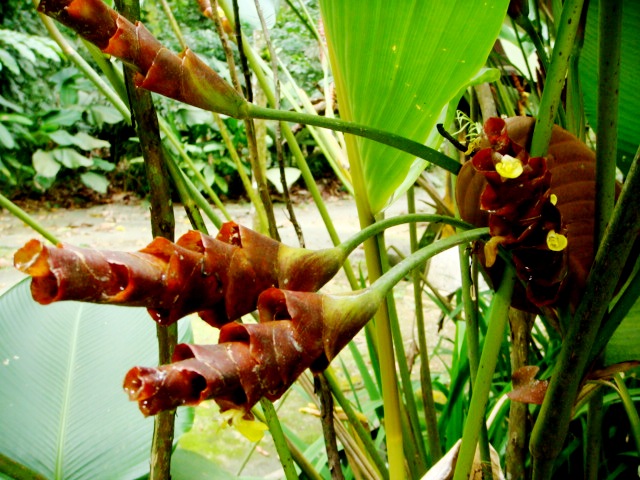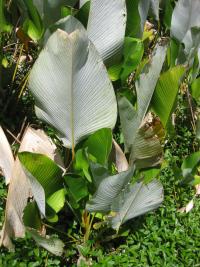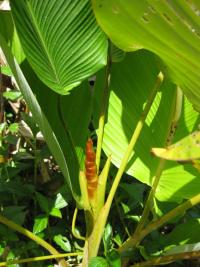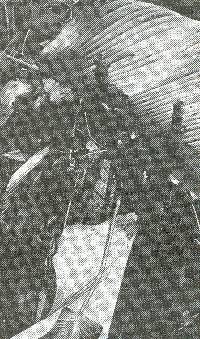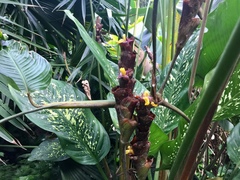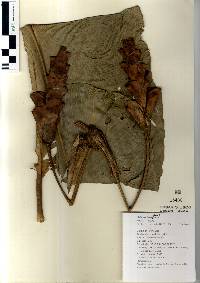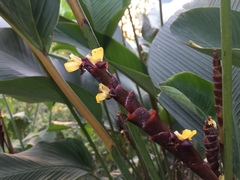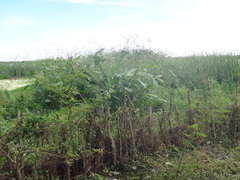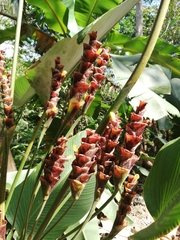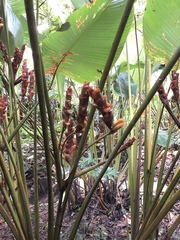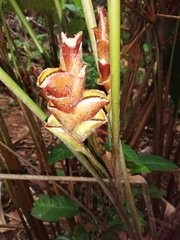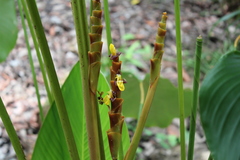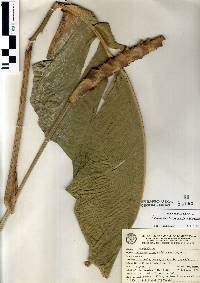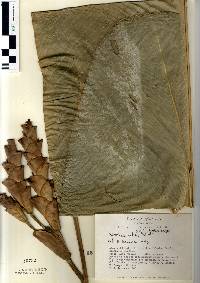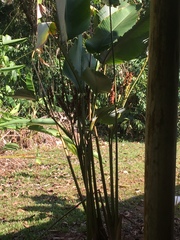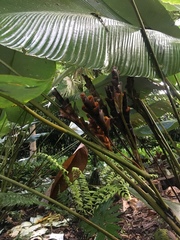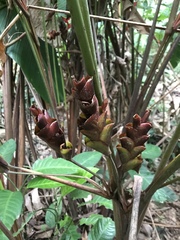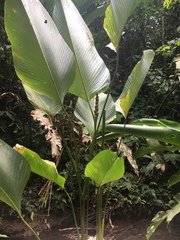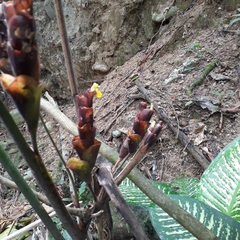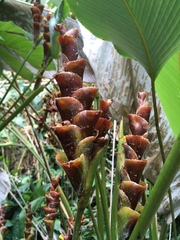
Neotropical Flora
|
Family: Marantaceae
[Calathea magnifica C.V.Morton & Skutch] |
Caulescent herb, 2-3 m tall, mostly glabrous. Petioles 1.2-2 m long, the sheath less than 2 m long, geniculate at petiole, the pulvinus to 17 cm long, brownish; blades broadly elliptic to almost rounded, obtuse or abruptly acuminate at apex, obtuse to truncate and abruptly decurrent at base, mostly 50-100 cm long (to 150 cm) and 25-60 cm wide, prominently whitish-pruinose on lower surface, the margins held +/- erect. Inflorescences emerging from sheath of subtending leaf; peduncles 6-17 cm long, unbranched; spikes oblong, +/- flattened, 10-30 cm long, 3-5 cm broad; bracts yellowish when young, reddish or bronze in age, 2-ranked, imbricate, nearly orbicular, 3.5-5 cm long, often lobed at apex with mucronate point; staminodia usually pale yellow, occasionally whitish; petals 4-4.5 cm long. Fruits capsules; seeds orange, with a brilliant orange aril. Croat 6992. Almost never in the forest except in tree-fall areas; occasional on creek beds and shoreline soil deposits. Flowers and fruits throughout the year, but activity is greatest during the early rainy season. The fruits develop quickly. The species has been seen pollinated by euglossine bees and is robbed of nectar by hummingbirds. Coastal areas from Mexico to Peru and Brazil; principally in coastal marshes and disturbed areas along both coasts. In Panama, known from tropical moist forest in the Canal Zone, Bocas del Toro, Colon, Chiriqui, Los Santos, and Darién, from tropical dry forest in Coclé, from premontane wet forest in Chiriqui and Panama (Cerro Campana), and from tropical wet forest in Colon (near Portobelo). |
|
|
|
Powered by Symbiota.

